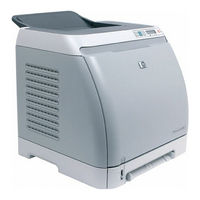HP PS Manuals
Manuals and User Guides for HP PS. We have 1 HP PS manual available for free PDF download: System Administrator Manual
HP PS System Administrator Manual (248 pages)
UNIVERSAL PRINT DRIVER and HP UPD Tools UPD 5.3
Table of Contents
-
-
-
Introduction19
-
-
-
Ndps59
-
-
-
Introduction95
-
-
Dynamic Mode96
-
Help99
-
Use Dynamic Mode100
-
Introduction108
-
Access HP MPA113
-
-
Create a New MPP118
-
Usemode Settings119
-
Update an MPP129
-
-
-
Create a New MPL134
-
Select a View142
-
Use User Groups151
-
Usemode Settings168
-
Job Accounting173
-
Job Delivery173
-
Functional Test176
-
Final Test177
-
-
-
-
-
-
Start212
-
Client Printing217
-
Policy219
-
Add/New Queues221
-
Create Queues223
-
Replace Drivers228
-
-
-
Symptoms239
-
Printer Driver239
-
-
-
Application243
-
Files to Collect243
-
Index
245
Advertisement
Advertisement
